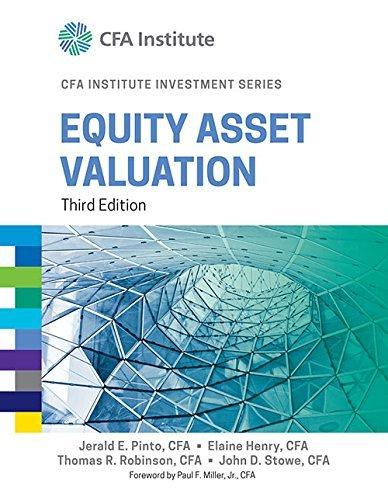Sales on a bill-and-hold basis involve selling products but not delivering those products until a later date.
Question:
Sales on a bill-and-hold basis involve selling products but not delivering those products until a later date. 42 Sales on this basis have the effect of accelerating the recognition of those sales into an earlier reporting period. In its form 10-K filed 30 September 2008, Diebold (NYSE: DBD) provided the following note:
Revenues Bill and Hold—The largest of the revenue recognition adjustments relates to the Company’s previous long-standing method of accounting for bill and hold transactions under Staff Accounting Bulletin 104, Revenue Recognition in Financial Statements (SAB 104), in its North America and International businesses. On January 15, 2008, the Company announced that it had concluded its discussions with the OCA in regard to its practice of recognizing certain revenue on a bill and hold basis in its North America business segment. As a result of those discussions, the Company determined that its previous, long-standing method of accounting for bill and hold transactions was in error, representing a misapplication of GAAP.
To correct for this error, the Company announced it would discontinue the use of bill and hold as a method of revenue recognition in its North America and International businesses and restate its financial statements for this change.
The Company completed an analysis of transactions and recorded adjusting journal entries related to revenue and costs recognized previously under a bill and hold basis that is now recognized upon customer acceptance of products at a customer location. Within the North America business segment, when the Company is contractually responsible for installation, customer acceptance will be upon completion of the installation of all of the items at a job site and the Company’s demonstration that the items are in operable condition. Where items are contractually only delivered to a customer, revenue recognition of these items will continue upon shipment or delivery to a customer location depending on the terms in the contract. Within the International business segment, customer acceptance is upon either delivery or completion of the installation depending on the terms in the contract with the customer. The Company restated for transactions affecting both product revenue for hardware sales and service revenue for installation and other services that had been previously recognized on a bill and hold basis.
Other Revenue Adjustments—The Company also adjusted for other specific revenue transactions in both its North America and International businesses related to transactions largely where the Company recognized revenue in incorrect periods.
The majority of these adjustments were related to misapplication of GAAP related to revenue recognition requirements as defined within SAB 104. Generally, the Company recorded adjustments for transactions when the Company previously recognized revenue prior to title and/or risk of loss transferring to the customer.
In 2010, DBD agreed to pay \($25\) million to settle Securities and Exchange Commission charges that it manipulated its earnings from at least 2002 through 2007. During that period, the company misstated the company's reported pre-tax earnings by at least \($127\) million.
According to the SEC, DBD’s financial management received reports, sometimes on a daily basis, comparing the company’s actual earnings to analyst earnings forecasts.
DBD’s management would prepare “opportunity lists” of ways to close the gap between the company's actual financial results and analyst forecasts. Many of the methods were fraudulent accounting transactions designed to improperly recognize revenue or otherwise inflate DBD’s financial performance. Among the fraudulent practices identified by the SEC were the following: improper use of bill and hold accounting; recognition of revenue on a lease agreement subject to a side buy-back agreement; manipulating reserves and accruals; improperly delaying and capitalizing expenses; and writing up the value of used inventory.
Step by Step Answer:






